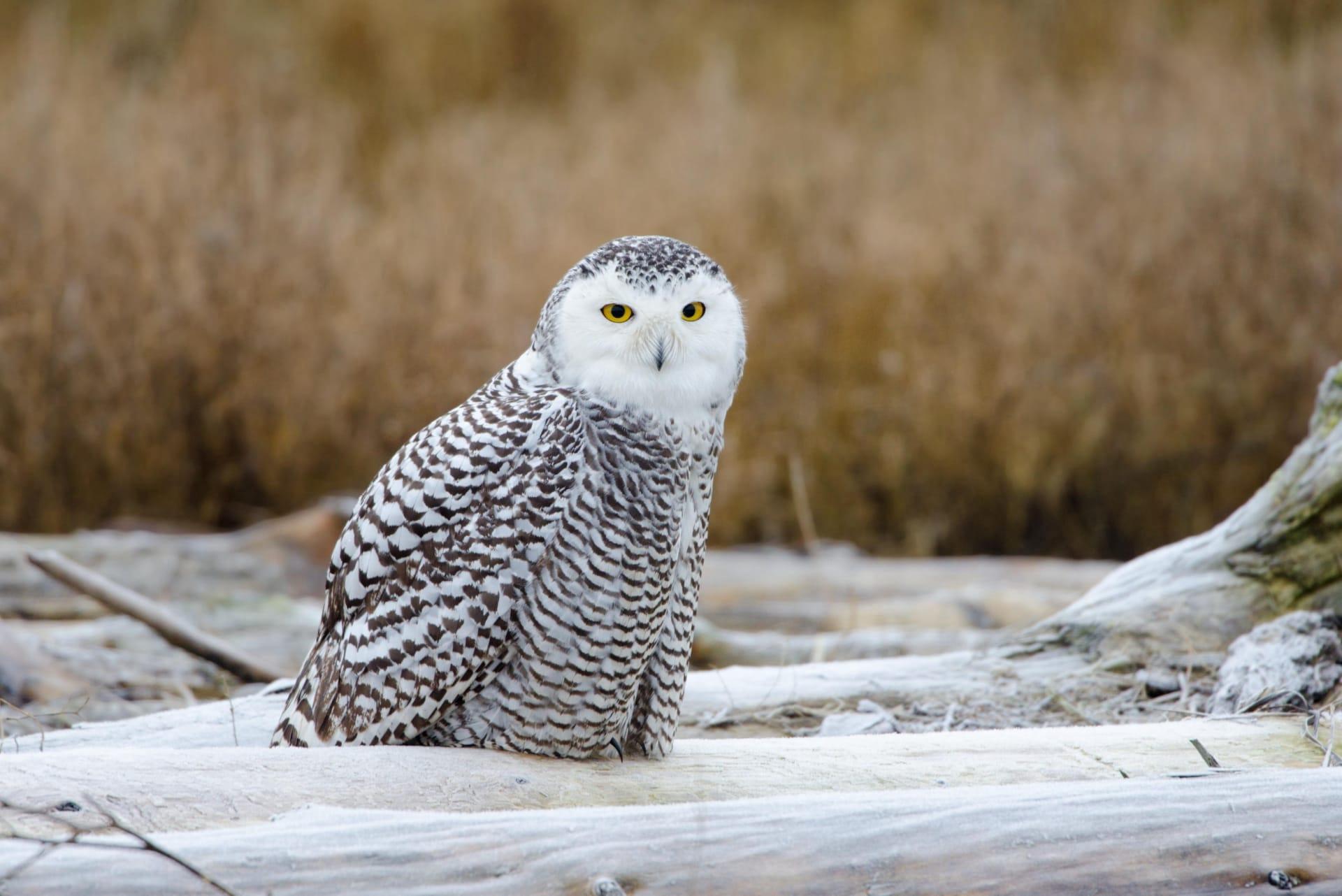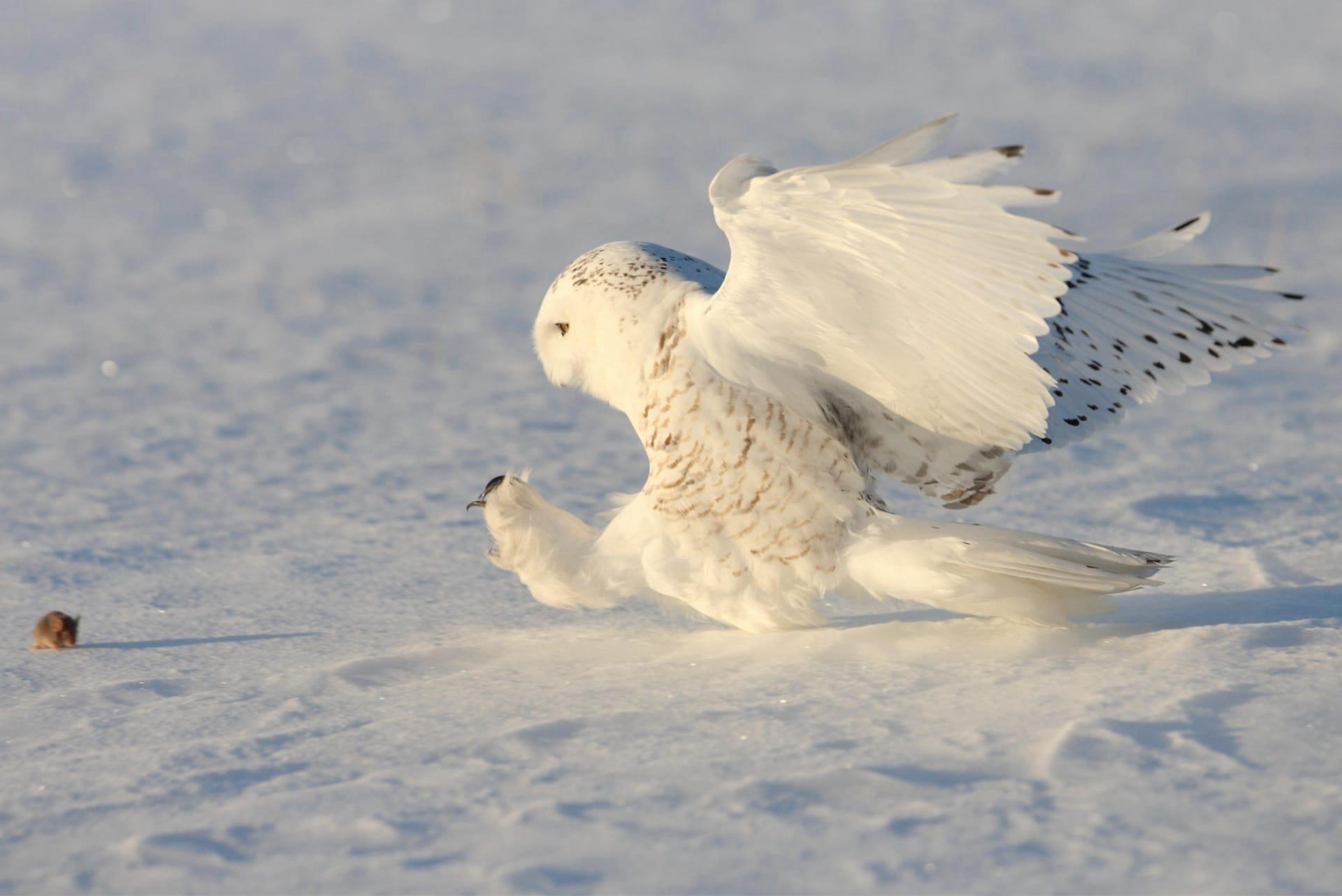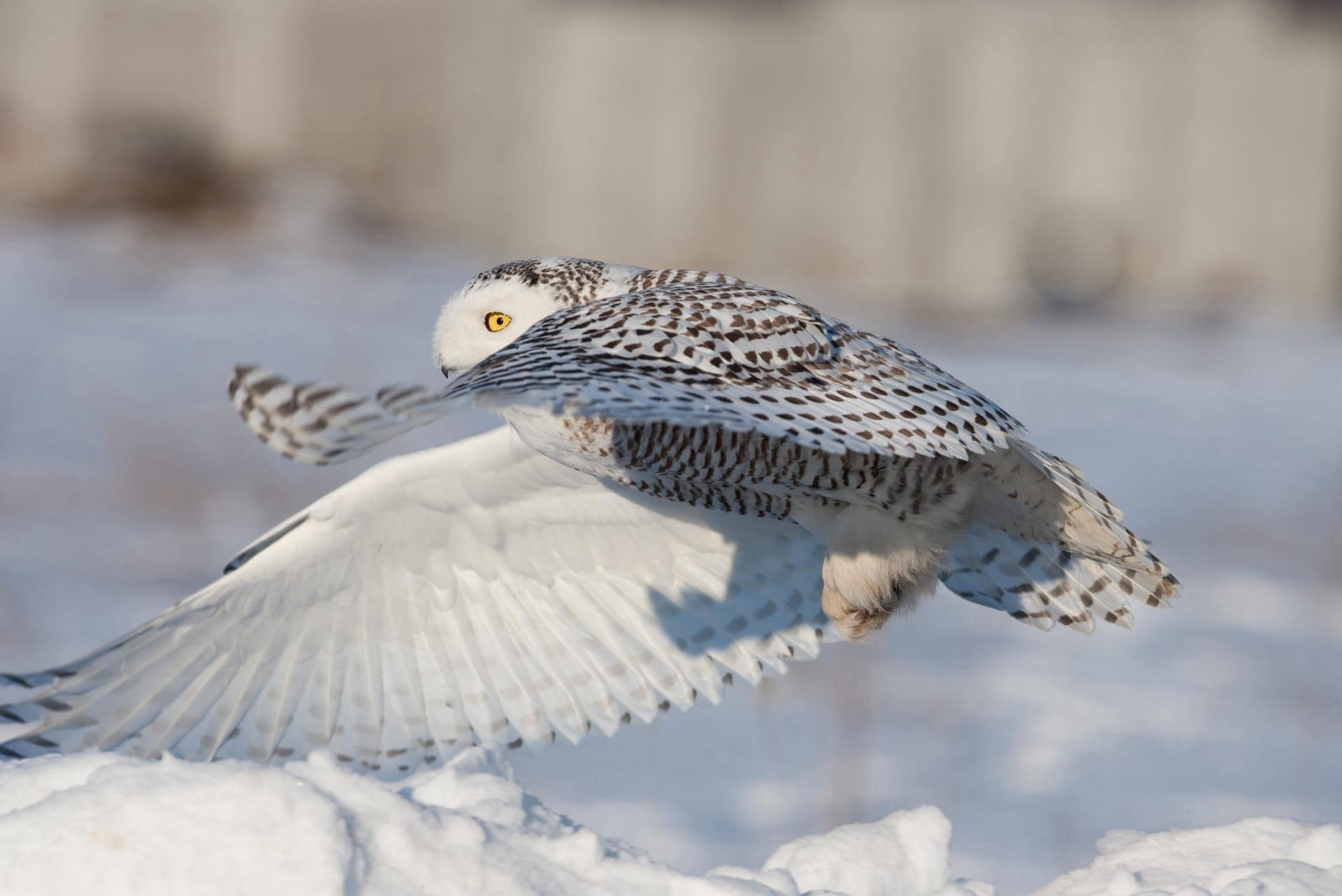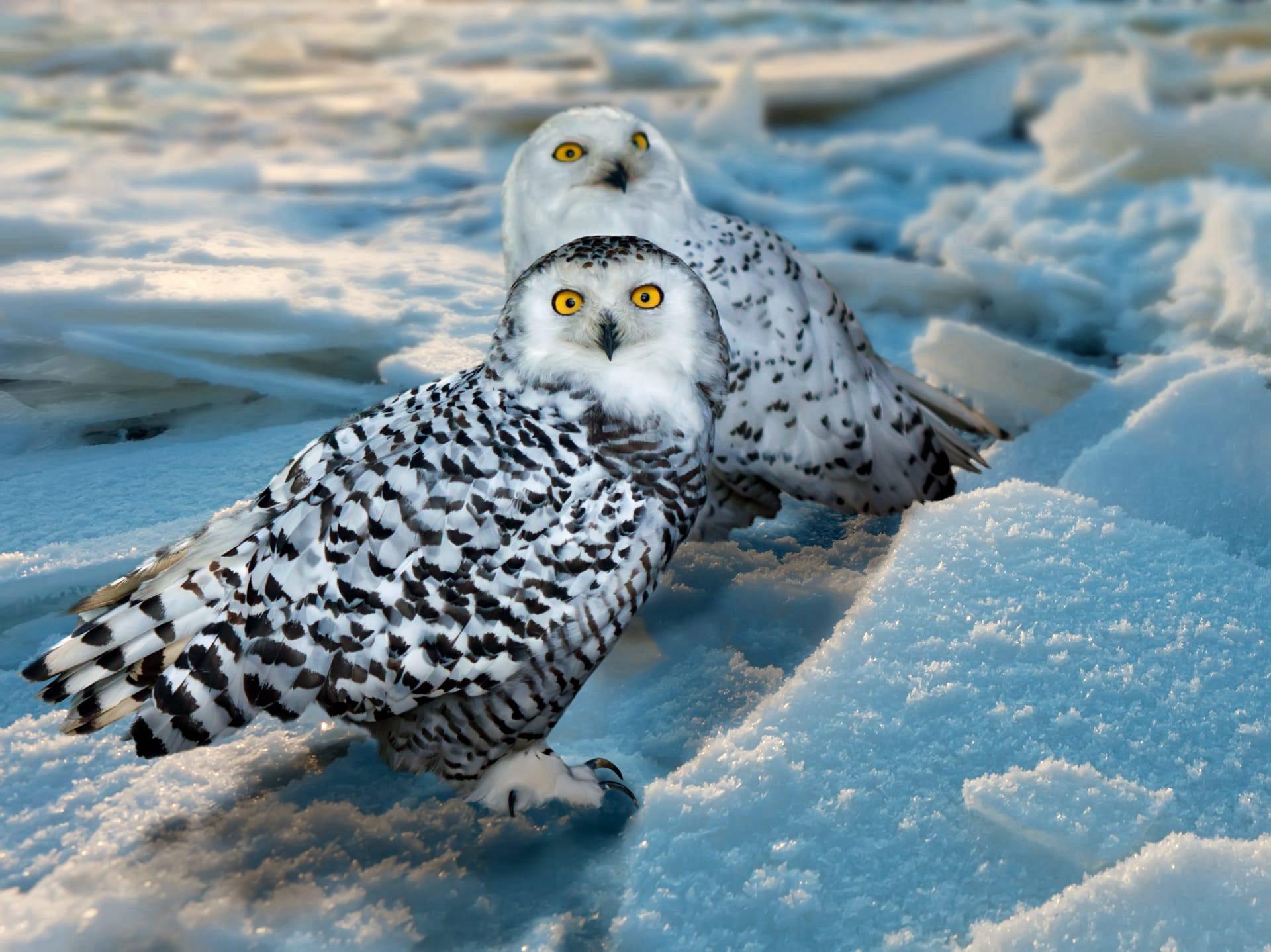Snowy Owl Characteristics
- Home /
- Mini Encyclopedia /
- Animal /
- Snowy Owl Characteristics
1
The Snowy Owl, a majestic bird, stands out with its large size and striking white plumage. Adult males are almost pure white, while females and young birds have more flecks of black on their feathers. These owls typically measure about 20 to 28 inches in length, with a wingspan reaching up to 4.8 to 5.6 feet. Weighing in at about 3.5 to 6.5 pounds, they're among the heaviest owl species in North America. These impressive birds can live up to 10 years in the wild, but some have been known to live over 28 years in captivity.
The most remarkable organ of the Snowy Owl is its eyes. Their large, yellow eyes are not just striking in appearance but are highly adapted for their hunting lifestyle. Unlike most owls, Snowy Owls are diurnal, meaning they're active during the day. This is where their excellent eyesight comes into play, allowing them to spot prey from great distances. Their eyes are also specially adapted to detect prey under the snow and can even gauge distances in low-light conditions.

2
Question: Do Snowy Owls migrate?
Answer: Yes, Snowy Owls do migrate, but their migration patterns are irregular and largely depend on the availability of their main food source, lemmings. During years of lemming abundance in the Arctic, many Snowy Owls may choose to stay in the north. However, when lemming populations are low, these owls migrate southward in search of food. These migrations can sometimes bring them into Canada and the northern United States. Unlike many bird species, their migration is not strictly seasonal and can occur during any time of the year.

3
Snowy Owls are renowned for their agility in flight. Despite their large size, they can fly silently, thanks to the unique structure of their wings and feathers, which minimize noise. This silent flight aids in stealthily swooping down on their prey. Additionally, they can reach speeds of up to 50 miles per hour in flight.
As for hunting, Snowy Owls have several impressive features. They primarily hunt during the day, unlike most owl species. Their diet mainly consists of small rodents, particularly lemmings. An adult Snowy Owl can consume up to 1,600 lemmings a year. They have keen hearing and exceptional eyesight, which allows them to detect prey beneath the snow. Once they locate their prey, they use their powerful talons to capture and kill it.

4
The Snowy Owl predominantly inhabits the Arctic tundra. This environment is characterized by its cold climate, open spaces, and minimal vegetation, offering the perfect hunting ground for these birds. They prefer treeless areas and are often found near coastlines, fields, and wetlands. The harsh environment of the Arctic tundra has shaped their thick plumage, which provides insulation against the cold temperatures.
Regarding reproduction, Snowy Owls are ground nesters. They usually lay 3 to 11 eggs, but the number can vary greatly depending on food availability. Breeding season starts around May or June. The female incubates the eggs for about 32 days, while the male provides food. Once hatched, the young owls stay in the nest for about seven weeks before fledging. Both parents fiercely protect their nest and offspring from predators.

5
Book: "Owls of the World" by Heimo Mikkola. This comprehensive guide, published in various editions since the 1980s, covers the Snowy Owl among other species. Mikkola, a renowned owl expert, delves into the biology, behavior, and distribution of owls globally. The book offers detailed insights into the Snowy Owl's habitat, feeding habits, and migration patterns.
Book: "Snowy Owl: Sovereign of the North" by David Tipling. This beautifully illustrated book, released in the early 2000s, focuses solely on the Snowy Owl. Tipling, an acclaimed wildlife photographer, combines stunning photography with in-depth research to explore the life of these owls in their Arctic habitat. The book covers aspects such as hunting techniques, breeding, and the challenges they face in the wild.